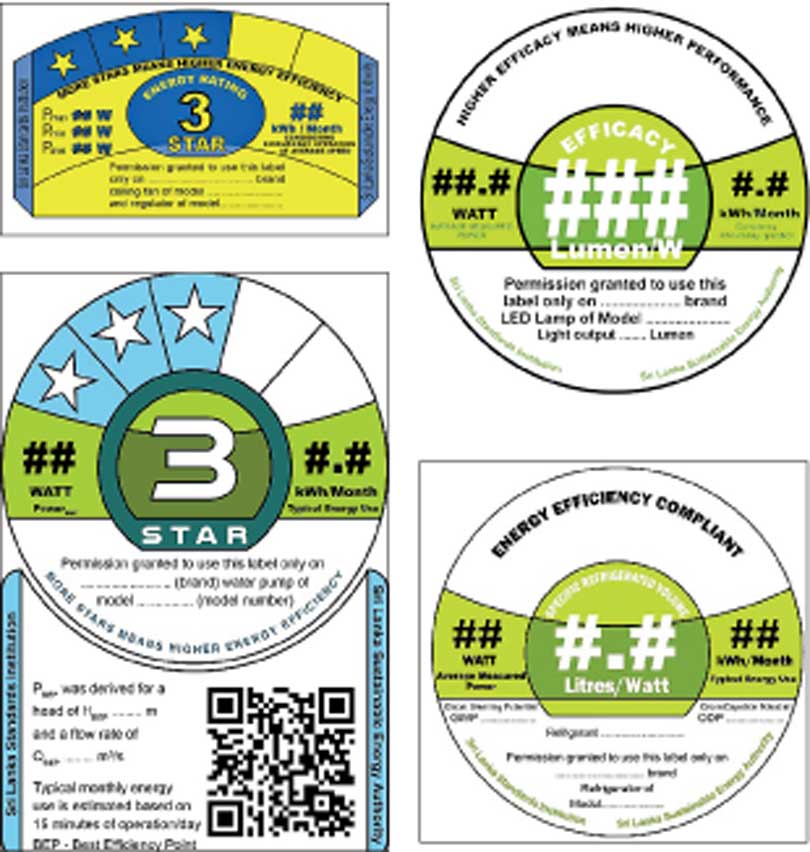Monday Dec 15, 2025
Monday Dec 15, 2025
Wednesday, 26 June 2024 12:26 - - {{hitsCtrl.values.hits}}

By Irosha Fernando
|
Irosha Fernando |
Energy is a limited resource and hence it is very valuable. Therefore, it is necessary to use energy thriftily. Electricity is a high-grade energy and a very versatile form of energy. Modest use of energy, reducing energy waste, energy efficiency improvement and efficient system development are the key strategies for the careful use of energy. Energy efficiency improvement, among the other measures, plays a vital role by accommodating the two practices such as the use of energy efficient equipment and the use of equipment efficiently.
Using high energy efficient products will reduce the energy cost which is the most significant cost factor during the lifetime of an equipment. Hence when purchasing equipment, purchasing energy efficient products is very important. In the case of large Institutions whether industrial or commercial, purchase decisions are taken through technical consultations and therefore in most of the times, energy efficiency is considered as a major factor to be considered which will end up with purchasing energy efficient products.
Yet the difficulty in identifying and choosing energy efficient products is one of the major issues faced by the small industries, cottage industries or households. Even the proprietors have the knowledge that energy efficient products save energy and money, they lack the knowledge to choose energy efficient products.
In the equipment market there are various products with different brand names and model numbers and their efficiencies are different. Further, energy efficiency of a product is not a common information given with the product. Energy label is a proven tool for guiding the buyer to choose energy efficient products in the market. An energy label merely expresses the energy efficiency level of a product in a simple manner so that any buyer can understand the level of energy efficiency of that product and compare the energy efficiencies in similar products in the marketplace.
Different countries in the world have introduced different energy labels for a variety of energy using products, especially for electric appliances. Developed countries have energy labels for many appliances, making it easy for the customers to choose the right product. The well-known ‘Energy Star’ label on older desktop computers is a good example of this.
In Sri Lanka, for Compact Fluorescent Lamps (CFLs), ceiling fans, LED lamps and refrigerators energy labels have been introduced. Many other equipment such as air conditioners, water pumps, televisions, computers, LED panel lights, rice cookers, gas stoves, pedestal and wall fans are in the waiting line to be added in the list of labelled products in Sri Lanka. CFLs and ceiling fans have the star label, in which the higher the number of stars mean higher energy efficiency of the products. Number of stars vary from one to five, making the energy efficiency of the product increase gradually with the increase in the number of stars. Based on the test results of the samples of the products tested at laboratories (in most cases at accredited laboratories) the level of energy efficiency of the product is calculated and the corresponding star rating for that level of energy efficiency is determined and assigned. However, if the product is not capable of achieving at least one star, i.e. if the level of energy efficiency of that product is lower than the permitted efficiency level, such products are barred from entering the local market.
For LED lamps and refrigerators, another form of energy label which is termed as Minimum Energy Performance (MEP) label have been introduced. These two labels also are typically similar, and they display a prominent number in the centre of the label. The higher the value of this number, the higher the energy efficiency of the product. However, in future these two labels will be harmonised to a single 5-star label. It has been practically proven that buyers of energy labelled efficient products have realised high energy savings and reduced their electricity bills.
Displaying the energy label or Minimum Energy Performance label on the above-mentioned equipment have been made mandatory by the law of Sri Lanka. Four separate gazette notifications have been published in this regard. If the product does not achieve at least one star or not at the minimum energy efficiency level, entering of such products into the local market is prohibited by these mandates. Display of the label on the product is also made mandatory from these gazette notifications. As a citizen of this country now we also have the opportunity of looking for the energy label before buying an energy using equipment.
The appearance of the energy label will be much more informative in future with a QR code introduced in the label so that the buyers can realise many benefits such as instant comparison of energy efficiency between products, assure authentication of the energy label, good data base on energy efficient products, etc. In future with the energy labels appearing on a greater number of different equipment we will have the chance of using energy efficient equipment. Therefore, it should be our duty as consumers to choose energy-efficient appliances without merely considering the initial prices. That will help the betterment of the country and the people.